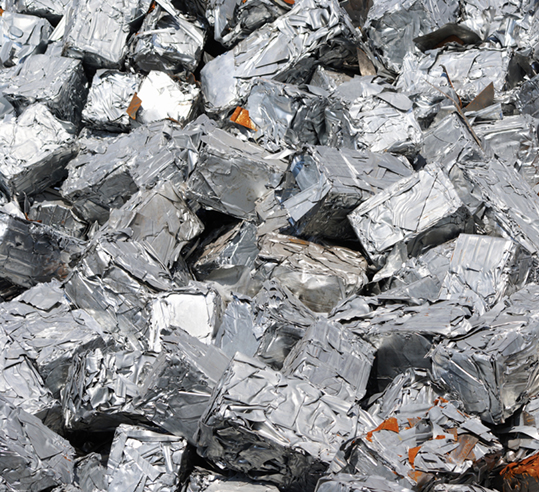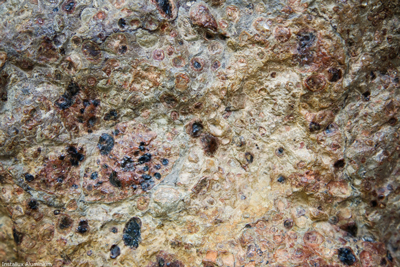The life cycle of aluminium
Production of aluminium: from crude ore to usable material
The journey is long from a substance extracted for its natural environment and the aluminium we all know in our everyday life. To explain the production of aluminium, a particularly technical process, we need to look at the various stages involved in processing it.
From bauxite to alumina
Aluminium is abundant in the earth’s crust. However, it is not found in a natural state, which explains why it was discovered belatedly by scientists. In the natural environment, the main source of aluminium is bauxite, an ore partly made up of aluminium atoms.
To obtain aluminium, the first stage therefore consists in dissolving bauxite to extract an intermediate product, namely alumina. To that end, bauxite undergoes a series of manipulations:

Firstly, it is crushed to make it easier to manipulate.

The bauxite powder is then dissolved in high-pressure heated soda.

This produces sodium aluminate, which is filtered, dehydrated and cooled.

This produces aluminium oxide, the other name for alumina.
This first stage in the production of aluminium is generally carried out near the ore mining sites. The alumina is then processed on site, or shipped as a raw material to the aluminium smelting plants for the next processing stage.
From alumina to aluminium
As bauxite cannot be directly transformed into aluminium, it has to undergo another industrial process called electrolysis:
- The alumina powder is poured into a cryolite bath at a very high temperature.
- The mixture is then subjected to a particularly intense electrical field.
- This causes electrolysis, which separates the different elements of the mixture according to the electric charge of their molecules.
- This deposits the pure aluminium at the bottom of the tank, where it is easy to retrieve.
The electrolysis process, used for the primary production of aluminium, is extremely power-hungry but delivers an excellent yield from the bauxite ore.
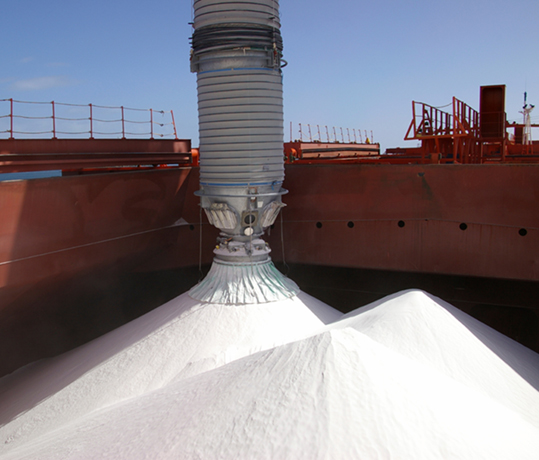

Did you know?
In France, approximately 95% of the aluminium in the transport and building sectors is recycled! And this is achieved without affecting the performance of the sections and sheets produced.
Processing aluminium to incorporate it into industrial practices
After aluminium has been extracted from its natural environment, it undergoes an initial process before it is delivered to the companies that will use it in their finished products. As aluminium can be used in a multitude of industries, it can be delivered in several forms by the smelting plants.
Alloys and forming processes: the role of the smelting plant
After electrolysis, pure aluminium is processed by the smelting plants, which form it before shipping it to a manufacturer. This is because aluminium must be delivered in the form of intermediate products so that it can be incorporated easily into the finished products.
Before that stage, the smelting plant produces different alloys. Different metals are incorporated into aluminium in small quantities to reinforce some of its qualities, in particular its strength or machining potential. The most common alloys include:

Zinc

Magnesium

Copper

Silicon
After the smelting plants take delivery of these alloying elements, the aluminium is cast in the form of ingots or continuously. This stage allows it to take different forms:
- Aluminium plates,
- Sheet, wire, extrusion or remelt ingots,
- Foil in different thicknesses,
- Bars of different sections, round or square in particular,
- Aluminium wire.
The output from the smelting plants is the input for the production processes of manufacturers. Each manufacturer uses the plates, ingots, wire or foil to process them one last time and incorporate them into their products. Depending on the end use, there are several ways of working the aluminium.
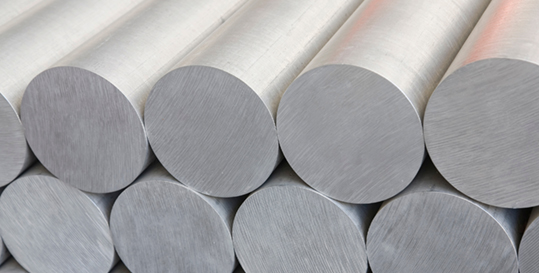
Rolling
In the rolling process, large plates or ingots undergo a crushing process that produces increasingly thinner plates or sheets. Inserted repeatedly under cylinders, the aluminium plates are both crushed and drawn out. The process is repeated until the desired thickness and dimensions of the plate or sheet are achieved.
Extrusion to obtain made-to-order sections
The extrusion process produces sections in a variety of forms, acting on the thicknesses and recesses to achieve the desired structural and insulating properties.
Extrusion is generally done on extrusion ingots, wrought using very complex types of machinery. This process produces structures that are light, sparing of material and structurally very strong. Sections are quite logically found in the building industry, but also in the transport or aerospace industry.
Modelling and moulding aluminium
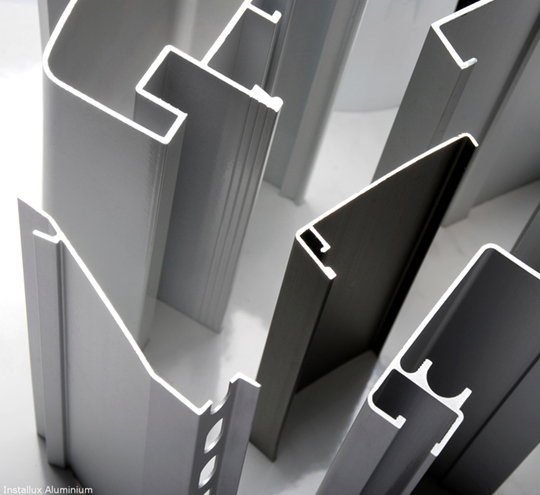
■ In certain cases, aluminium does not require a particularly complex process. It can be wrought cold from an unwrought block in one piece. The block is then cut, dug, drilled and polished to achieve the required dimensions.
■ Another way of working aluminium, a hot process in this instance, consists in moulding parts all in one piece. Molten aluminium lends itself particularly well to this process, to make a very specific part. When cooled, the part can be worked like any other block of unwrought (primary) aluminium.
Adding colour and texture to aluminium
Aluminium is particularly easy to customize. From the smelting plant stage, or later at the final processor’s plant, it can be worked to give it a particular texture and change the way it reflects light. Depending on the processes it undergoes, polishing in particular, it can be given a shiny or matt appearance, rectilinear or circular textures, a brushed effect, etc. Better still, as aluminium is very malleable, both hot and cold, its texture can be adapted to imitate other materials, like rock or wood.
It can also be coloured permanently. This is done by either an anodizing or a thermo-lacquering process. This capacity to take on any colour and texture makes it an ideal material for renovation works in the building industry.
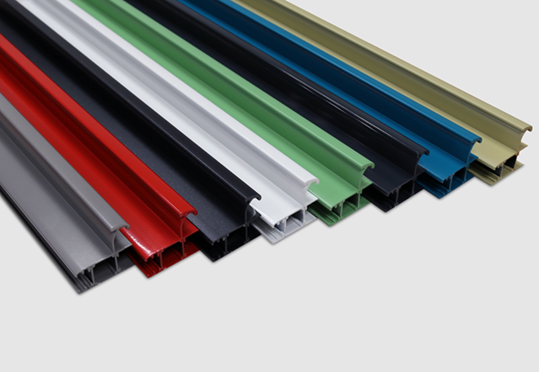
Recycling aluminium: bringing life back to a metal, indefinitely
Albeit particularly complex to produce initially, aluminium proves very easy to recycle. This metal can thus be reused very effectively and ecologically.
Recycling one tonne of aluminium require twenty times less energy than producing one tonne of primary aluminium. Most of these energy savings are made in the very high-temperature and high-pressure electrolysis process. In concrete terms, this also economizes the use of 4 tonnes of bauxite mined in the natural environment, and the power usage and carbon emissions generated by its conversion into aluminium.
When recycled aluminium is worked, we speak of second melting. However, it can be re-melted many times. As the recycled elements are mixed in most cases with the primary aluminium, this material can be recycled virtually ad infinitum. To go further, discover facts and figures about aluminium.
